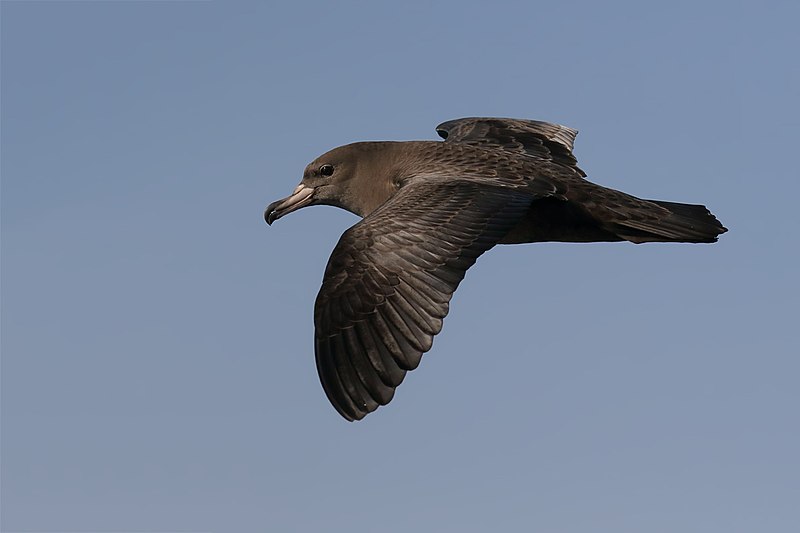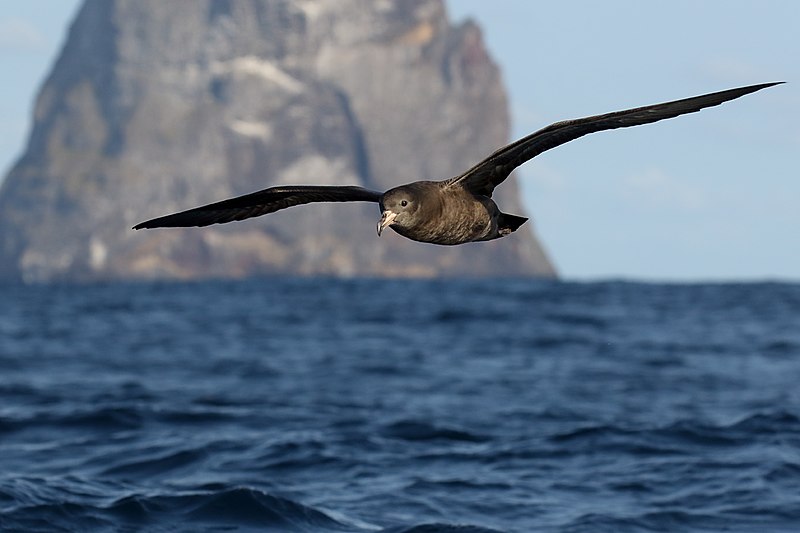Brenda and Tony Gibbs Award | 2021
Funding cutting-edge ornithology
The Brenda and Tony Gibbs Award is funded by a legacy left to the BOU to specifically fund ‘research on tracking and migration studies including the use of new technologies’.
Awards up to £20,000 are aimed at funding discovery science, technological advances, high-profile conservation and research with societal impact that delivers a step change in the understanding of the movements and migrations of birds.
2021 Award | £20,000
Investigating carry-over effects of plastic pollution on post-fledging movement and survival of a pelagic seabird, Flesh-footed Shearwater Ardenna carneipes
Principal Investigator
Dr Jennifer Lavers
Institute for Marine and Antarctic Studies (IMAS), University of Tasmania, Australia
Team members
Dr Alexander Bond, Bird Group, The Natural History Museum, UK
Project background
Our present geological epoch is called the Anthropocene for a good reason: the unprecedented and overwhelming effects of human activity on the global environment1. While habitat destruction, overexploitation, and ocean warming are long-recognised drivers of change across the entire planet2, the ubiquitous pollution of our oceans with plastic and synthetic chemicals has emerged insidiously. Only recently is it widely recognised3,4. Exponential increases in demand for plastic products, combined with ineffective waste management, adds enormous quantities of pollution to our oceans every year5. Options for its removal are very limited6, and the effects on marine wildlife are devastating7; so pollution may outpace better-known agents of global change such as habitat destruction3.
While the harm from plastics to individual organisms is beyond dispute, we fall short in our understanding of effects at higher levels of biological organisation (populations and species)8. Now recognised as one of the ‘grand challenges’ in pollution research, quantifying these pressures and their impacts is critically important for developing evidence-based responses to mitigate the consequences for biodiversity, human wellbeing, and the planet as a whole. The data are insufficient; and we have scarcely begun to effectively analyse the data we do have.
Of concern is plastic’s role as a pathway for chemical constituents of the debris itself (incorporated during manufacture) or environmental chemicals (pollutants absorbed from the surrounding environment), transferred to organisms upon direct ingestion of plastic or indirectly via the food web9,10. Another impediment to the accurate assessment of plastic impacts on the individual and population is the challenge posed by sub-lethal effects. Documenting harm when impacts are not obvious is difficult, but critically important as current evidence points to widespread sub-lethal effects. They have been quantified only rarely, and indeed, predominantly by our research group9,10 with data clearly demonstrating that exposure to plastic is linked with altered blood chemistry and metabolism11, inflammation and organ damage. Importantly, ingested plastics contribute to reduced body mass and wing length9, both of which are critical to fledging success in young birds and survival to recruitment age12.
At present most marine species consume only small quantities of plastic, but rates are predicted to increase sharply in coming decades13 in line with demand for plastic products. The suite of sublethal pressures species and individuals experience, including altered foraging behaviour and fledging success, are therefore critical issues for species conservation and management.
Project aims
This project will generate essential new data on responses of marine species to plastic pollution, with seabirds as a case study. While it will leverage two decades of research and data-gathering already underway on Lord Howe Island, Australia, the proposed tracking study is unique and independent from the existing monitoring program. At present, the long-term monitoring focuses on describing patterns/trends in the type, amount and source of plastics ingested over time, and the resulting sub-lethal effects (as mentioned above). Over the past 15 years, no tracking or migration work has been completed on Lord Howe Island, with the exception of a single study in 2007 which focused exclusively on overlap with long-line fisheries14. Thus, no data are available on how ingested plastics impact foraging and migration on Lord Howe’s seabirds, or any other marine bird species worldwide.
The project is designed to move from simply describing the plastic pollution problem, and crude
binary outcomes like mortality, to explanation and continuous quantification of effects at ecologically relevant scales. The project will investigate the impact of ingested plastic on shearwater chicks that have fledged and are now at sea. In many seabirds, the success of this voyage into the unknown hinges upon the ability of young birds to teach themselves to feed, fly, and navigate as quickly as possible. Controlled exposures to plastic and associated chemicals in laboratory settings have been shown to alter key behaviors in marine fish and gastropods, including feeding and predator avoidance15-17. Examining this relationship in situ in highly impacted apex predators, such as seabirds, is therefore a natural extension; but no such data exist for any high-trophic species.
Understanding how and when plastic alters the behaviour of seabirds is especially important at the fledgling stage, when birds embark on their first trip out to sea. Do birds that have ingested plastic undertake the same migration (i.e., route, schedule) as control birds that have not? Or do they perish or somehow end up on the wrong path? The answers will be of great importance to our understanding of the individual and population effects of plastic ingestion. To address this, we will undertake a bio-logging study, to compare the route, speed, post-fledging survival, migration, and foraging behaviors in shearwaters with differential levels of plastic exposure.
References – see here
Images
Flesh-footed Shearwater Ardenna carneipes patrickkavanagh CC BY 2.0 Wikimedia Commons 1 | 2 | 3




